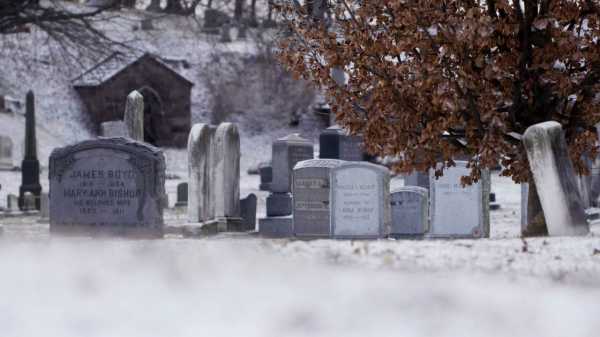
In restoring a neglected corner of Green-Wood Cemetery, in Brooklyn, students found fragments of information about life in nineteenth-century New York.
Popular on travel sites and guides today are grave tours through noteworthy cemeteries. Cemeteries have their own interesting architecture: in low-lying New Orleans, French settlers built St. Louis Cemetery with above-ground tombs, to protect against the encroaching sea. Today, visitors come to these burial grounds to brush elbows with ghosts and visit historic marble tombs and crypts. It was customary, in the eighteenth and nineteenth centuries, for families to buy grave sites for future generations and extended family. Some tombs could hold more than a hundred bodies—once the remains were cremated, that is. Ashes were poured into a velvet urn bag, which was tied with a golden, tasselled rope and placed into a tomb.
In addition to funeral rituals, cemeteries can tell us as much about life in a particular time and place. Early-nineteenth-century New Orleans was a relatively progressive city, where free people of color played integral roles in the city’s business and culture, despite living in segregated neighborhoods. The Catholic Church, which continues to have a strong presence in New Orleans, did not segregate any of its cemeteries in the city. Thirteen hundred miles north, Brooklyn’s Green-Wood Cemetery, which opened in 1838, reflects a different story.
In nineteenth-century New York City, racial and class disparities stratified both the living and the dead. In Green-Wood, African-American bodies were laid to rest in seven lots along the southwestern edge of the vast grounds. Free black Americans were buried in what were colloquially known as the Colored Lots, a section of land where bodies were buried without a foundation. In the course of the next century and a half, the lots were seriously neglected. The tombstones eroded, and some sank and were largely swallowed. Their disappearance parallels other parts of New York City’s history that tend to get ignored, such as the city’s grim past as a high-traffic port for the illegal international slave trade.
Reckoning with this shameful past, the restoration team at Green-Wood brought on a team of student interns to work on restoring the lots and to do archival research to find out what they could about the people who were buried there. The interns proposed changing the name of the Colored Lots to the Freedom Lots, out of respect for the people whose stories they were uncovering. In the above video, we visited Green-Wood to showcase the “Green-wood Memory” project, where the goal is to recover and restore as many headstones as possible to get a glimpse of this overlooked part of Brooklyn’s past.
Sourse: newyorker.com






